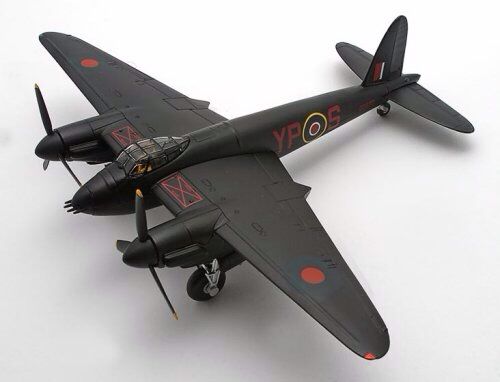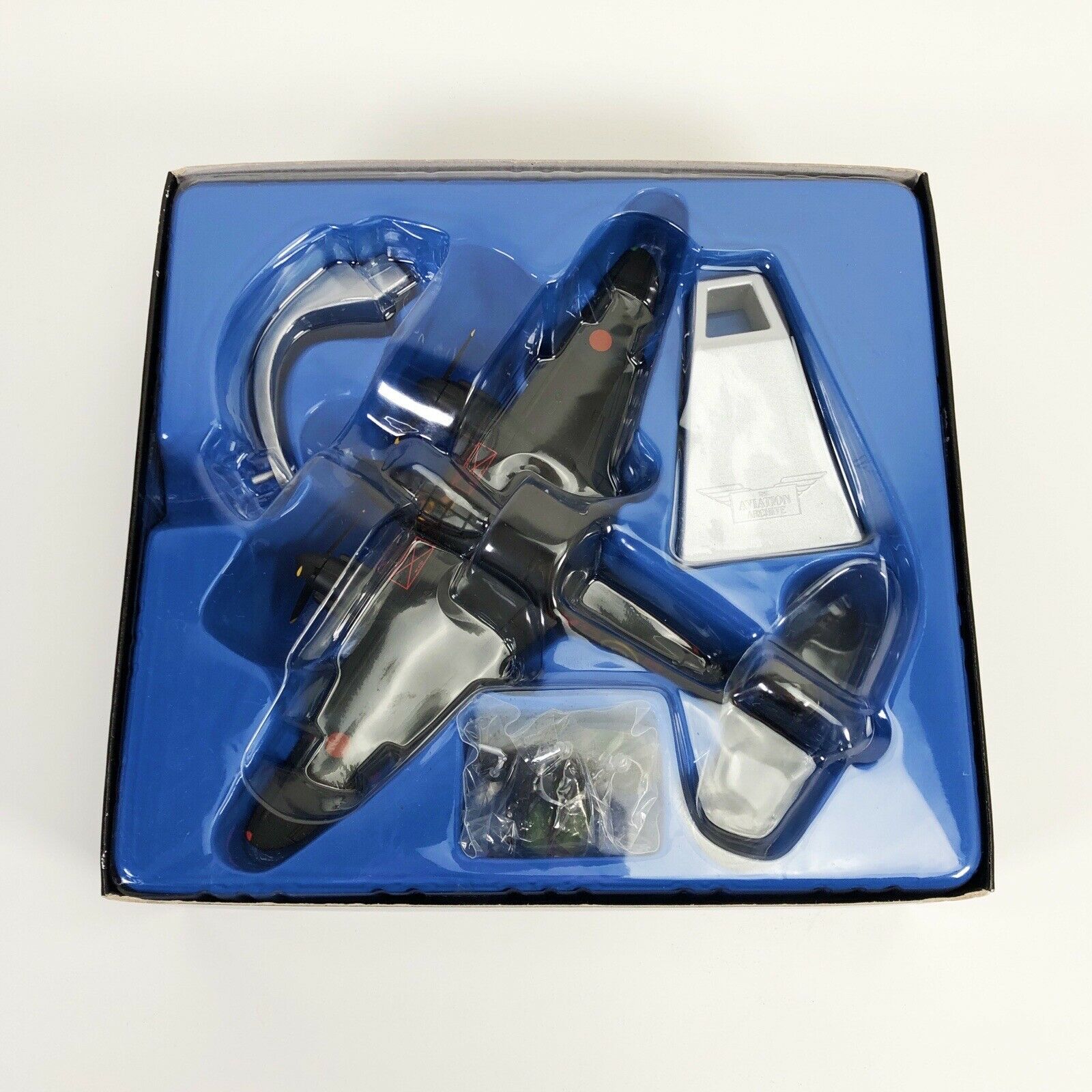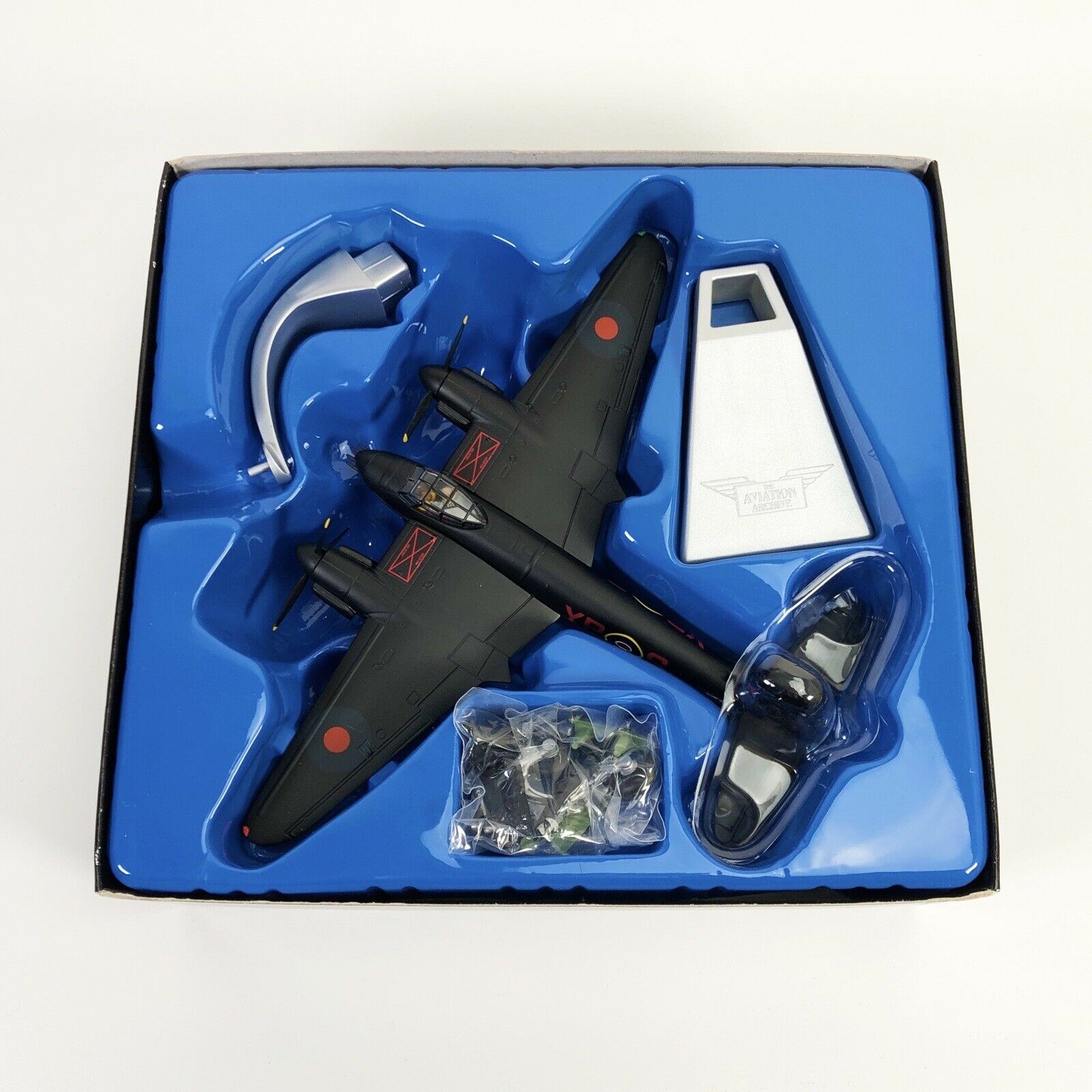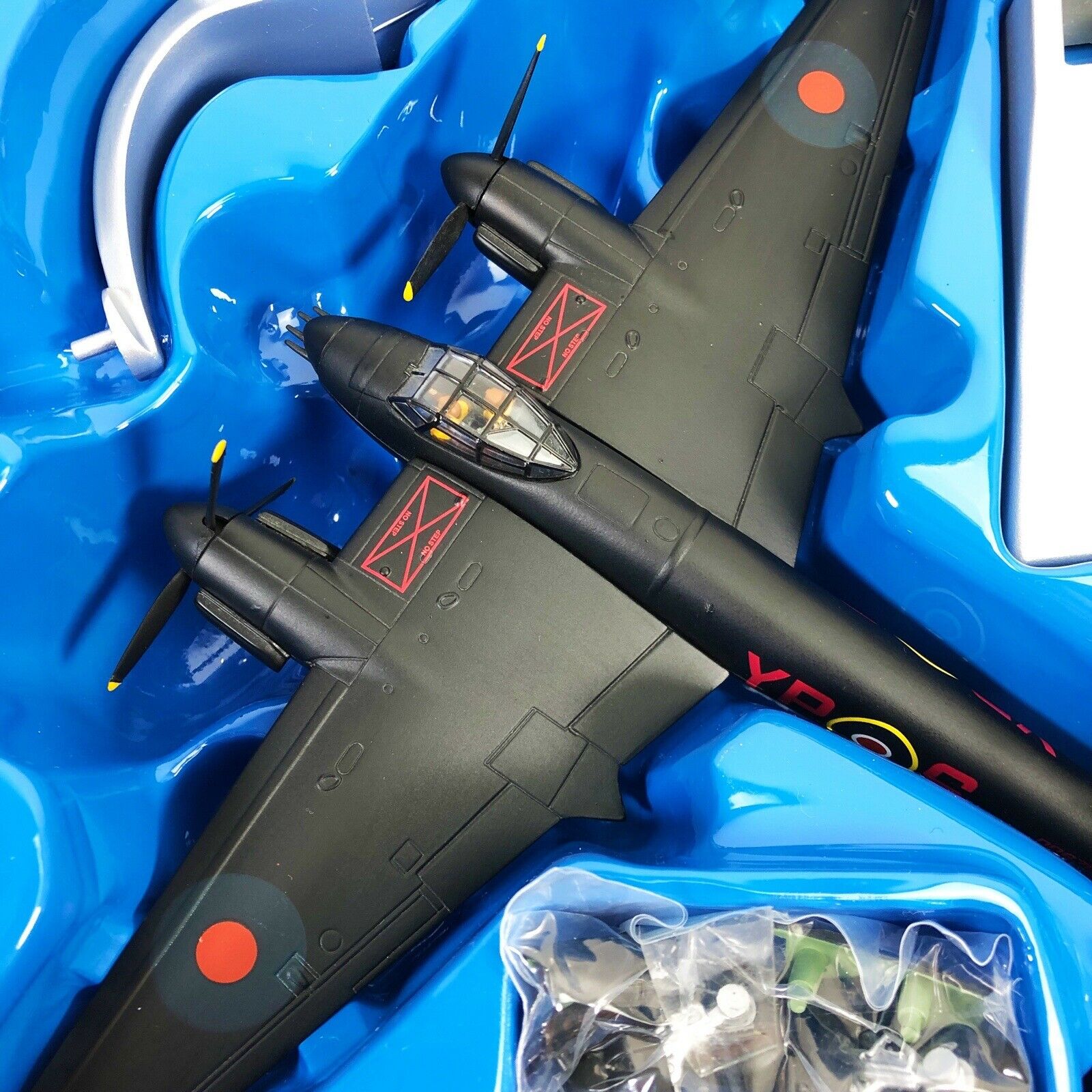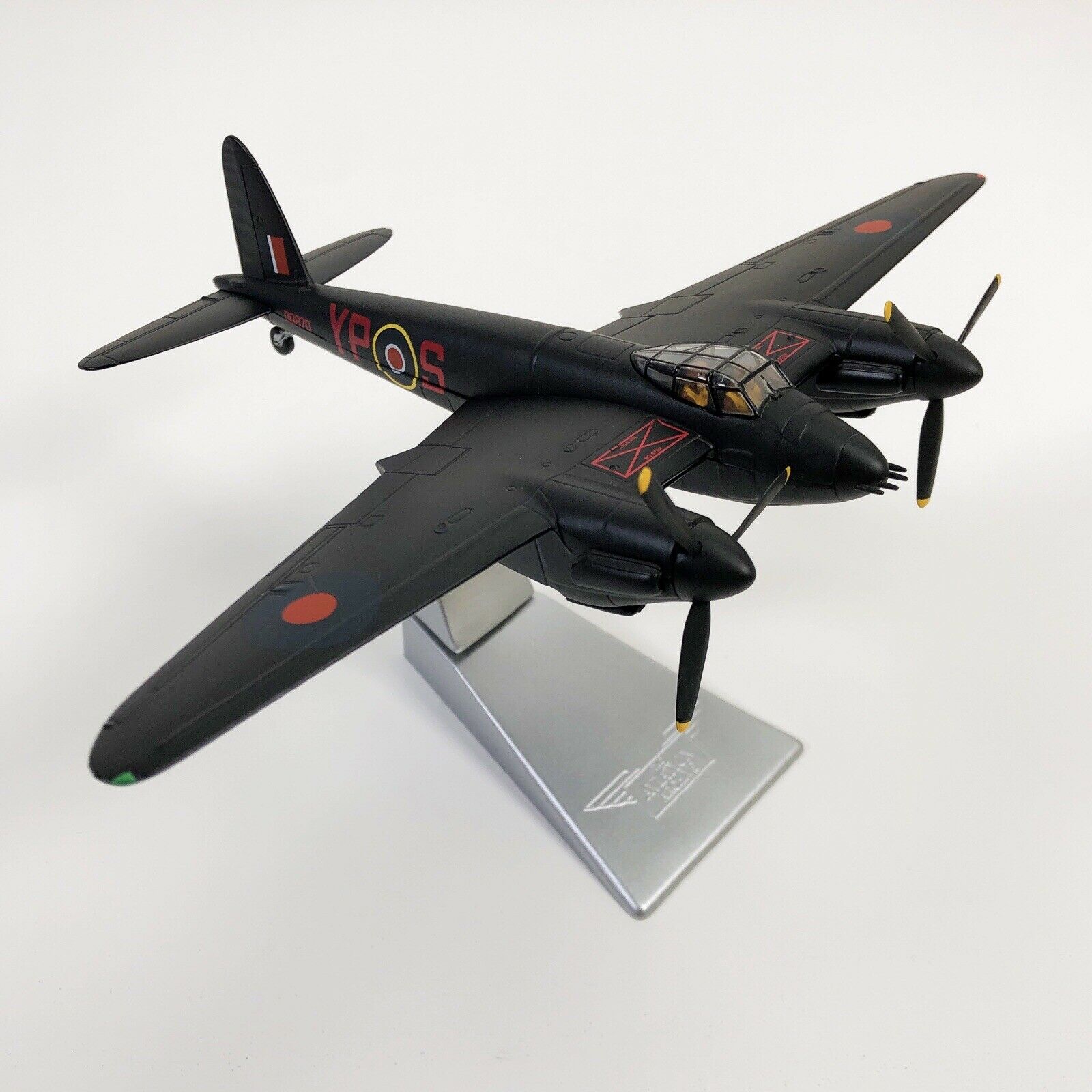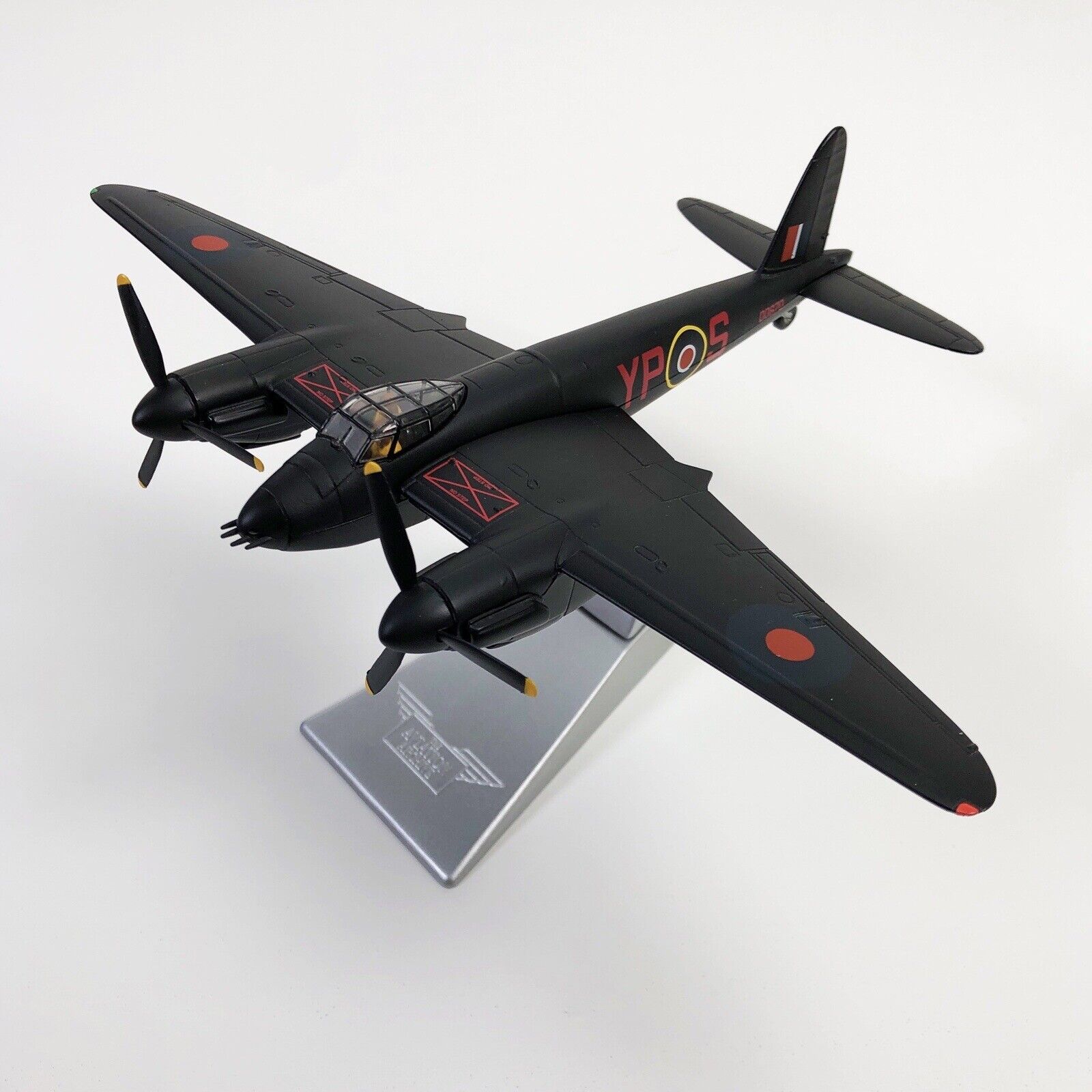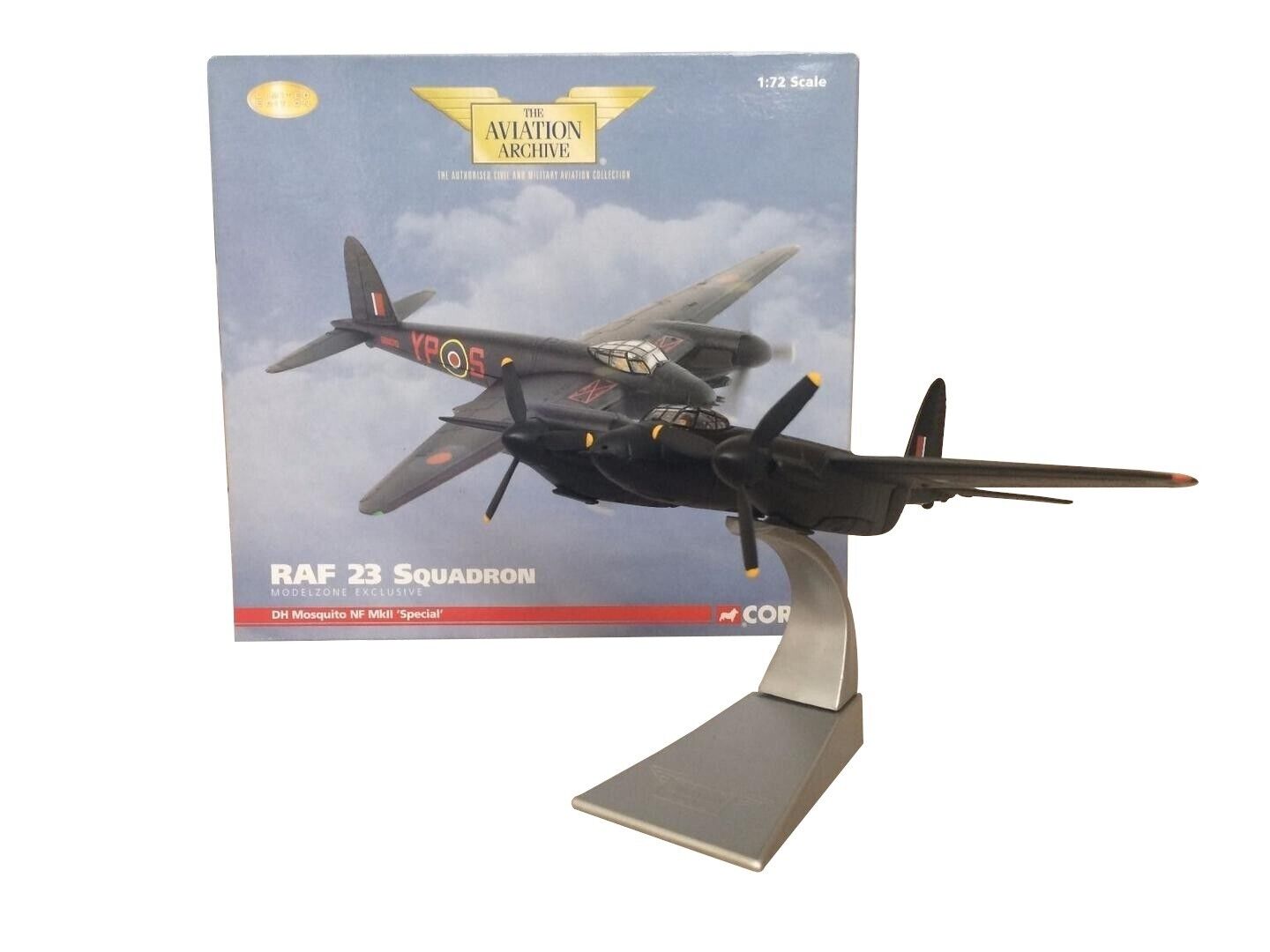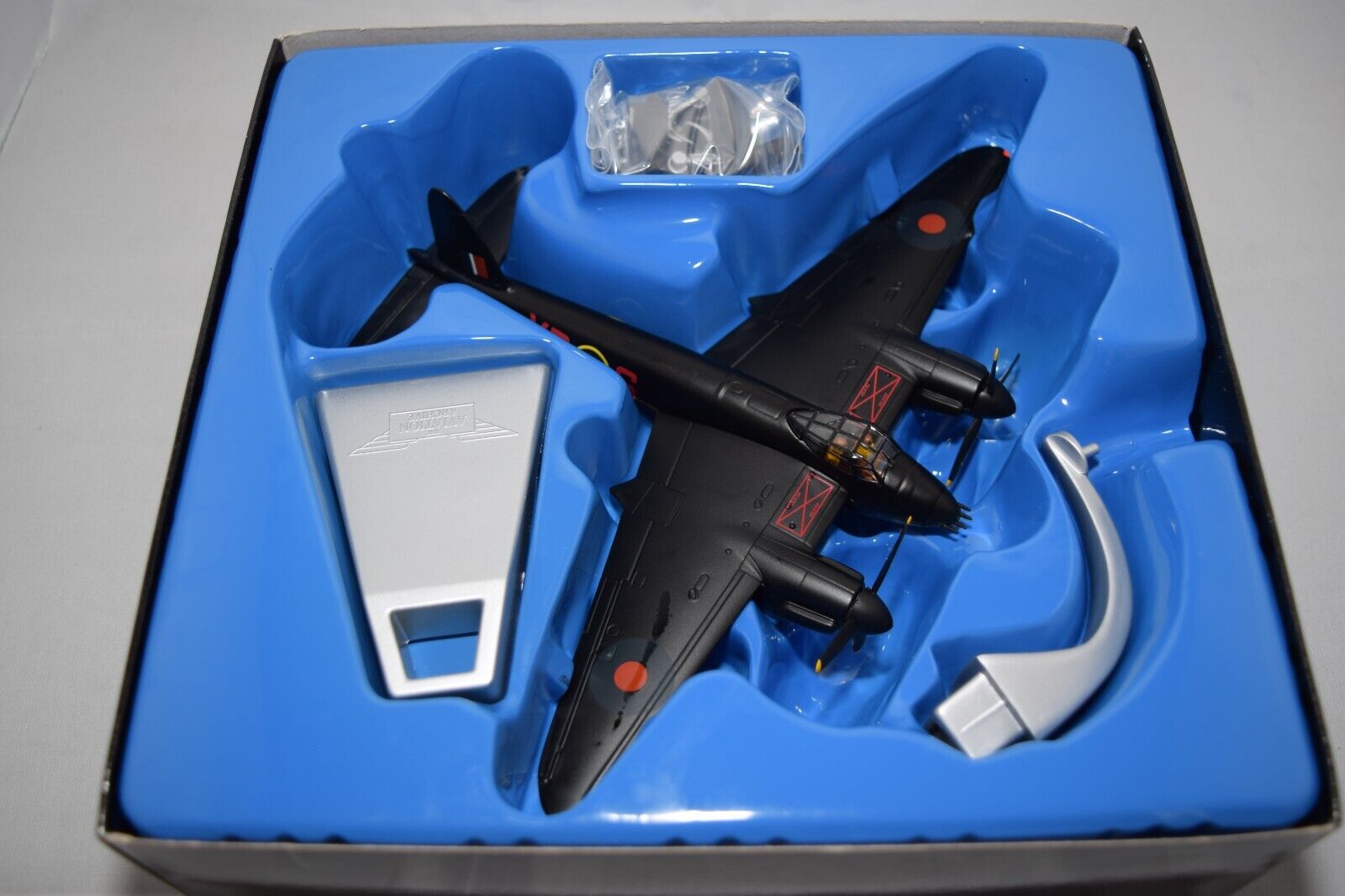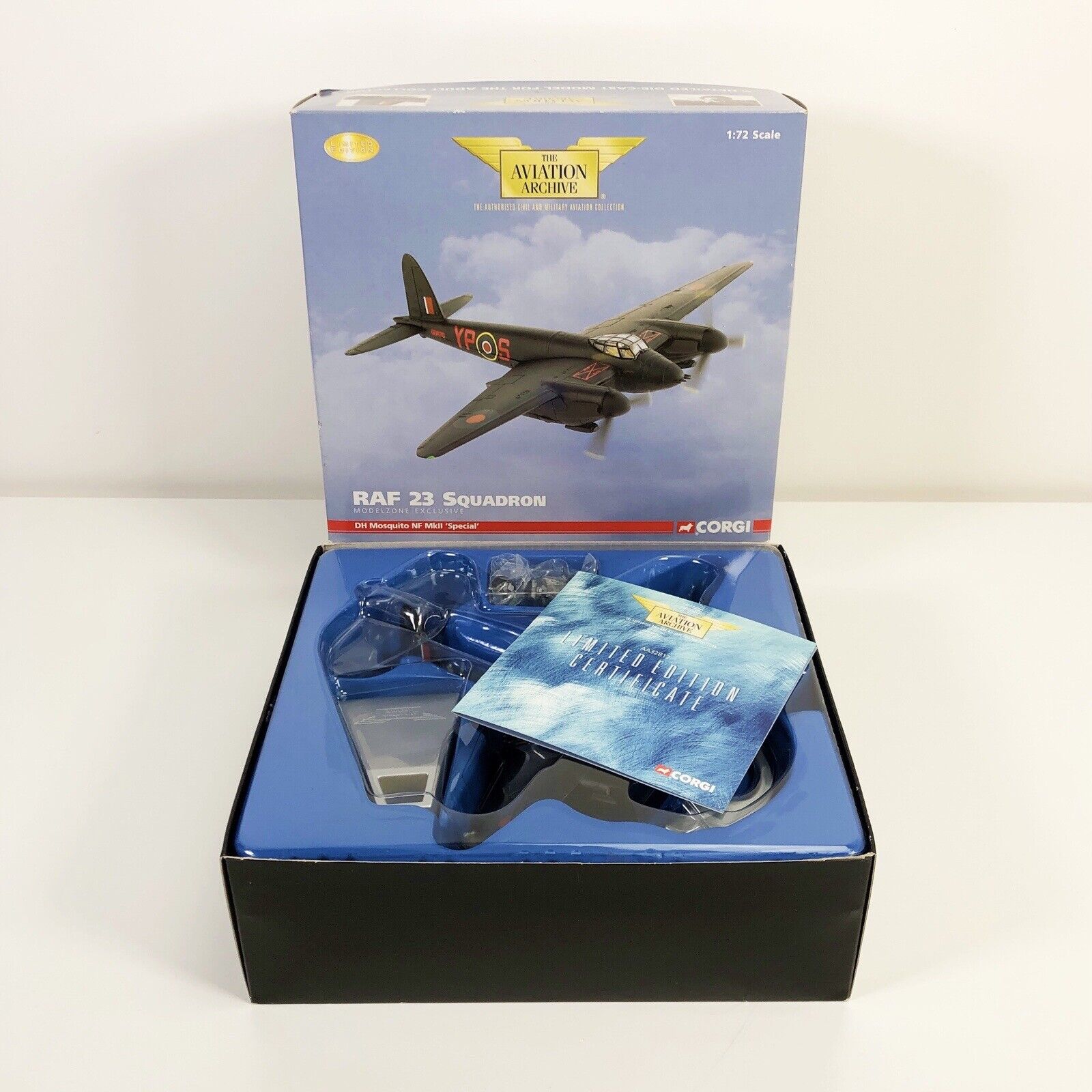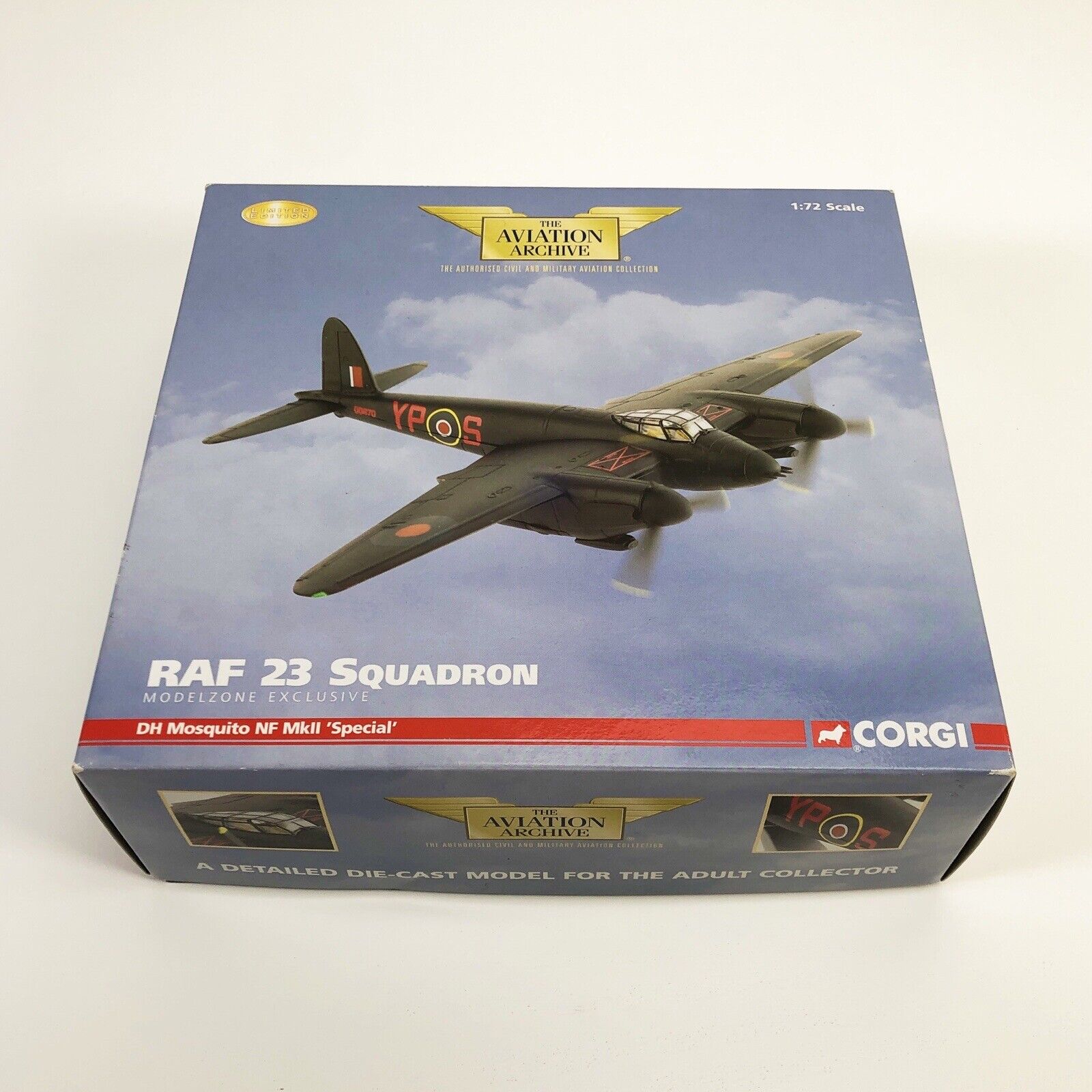de Havilland Mosquito NF 11 Night Fighter – 23 Sqn RAF 1942 (Black livery)
Add to compare1 in stock
£114.99
1 in stock
Corgi Aviation Archive 1/72 scale AA32812: De Havilland Mosquito NF 11 Nightfighter DD670 YP/S of 23 Sqn RAF , Wing Cdr. Bertie Rex O’Bryen ‘Sammy’ Hoare DFC, Ford Airfield, July 1942. Modelzone Exclusive Limited to 1,510 models. Comes in superb all black paintwork with optional position undercarriage and engine radiators, plus display stand.
Length 6.75 inches Wingspan 9 inches
Bertie Rex O’Brien ‘Sammy’ Hoare was one of the truly great RAF ‘characters’ of WWII complete with glass eye and six inch handlebar moustache, and is acknowledged as one of the finest Mosquito Intruder pilots.
Bertie Hoare flew Intruder Operations in Bostons and then Mosquitos. His daring exploits earned him the D.S.O. and bar and D.F.C. and bar. He finished the last part of the Second World War as Station Commander of R.A.F. Station Little Snoring Norfolk. .
He was an early exponent of intruding, flying Blenheims and then Havocs over the Low Countries. In July 1942, 23 Squadron converted to Mosquito NFIIs with increasing success. When 23 Sqn went to Malta in early 1943, ‘Sammy’ set up a specialized Intruder training school at Cranfield before posting to 605 Squadron as CO, again on Mosquitos.
Then came his period as Station CO at Little Snoring, continuing to fly and score victories which are recorded on the scoreboards preserved in St Andrews Church. His briefings to crews are fondly remembered ; one well-known and typical example finished :
‘Gentlemen, there will be flak; almost certainly quite heavy flak. If you cannot go over, you will go under. If you cannot go under – you will go through!”
The following is a citation following his award of a bar to his DSO on 4 April 1944:
“Bertie Rex O’Bryen HOARE (37853) 605 Sqdn
This officer has participated in more than 100 sorties, involving attacks on airfields in Germany, Belgium, Denmark, Holland and France, escorts to bomber formations and a variety of other missions. He is a magnificent leader whose personal example of courage and devotion to duty has inspired all. In addition to his activities in the air, Wing Commander Hoare has devoted much of his energy and skill towards the training of other members of the squadron with excellent results. This officer, who has destroyed at least eight enemy aircraft, has rendered most valuable service.”
He died on 26 March 1947 at age 34, following an air accident over the Pacific, flying most appropriately a Mosquito.
The de Havilland DH.98 Mosquito was a British multi-role combat aircraft that served during the Second World War and the postwar era. It was known affectionately as the “Mossie” to its crews and was also nicknamed “The Wooden Wonder”. It saw service with the Royal Air Force (RAF) and many other air forces in the European theatre, the Pacific theatre of Operations and the Mediterranean Theatre.
Originally conceived as an unarmed fast bomber, the Mosquito was adapted to many other roles during the air war, including: low to medium altitude daytime tactical bomber, high-altitude night bomber, pathfinder, day or night fighter, fighter-bomber, intruder, maritime strike aircraft, and fast photo-reconnaissance aircraft. It was also used by the British Overseas Airways Corporation (BOAC) as a transport.
When the Mosquito entered production in 1941, it was one of the fastest operational aircraft in the world. Entering widespread service in 1942, the Mosquito supported RAF strategic night fighter defence forces in the United Kingdom from Luftwaffe raids, most notably defeating the German aerial offensive Operation Steinbock in 1944. Offensively, the Mosquito units also conducted nighttime fighter sweeps in indirect and direct protection of RAF Bomber Command’s heavy bombers to help reduce RAF bomber losses in 1944 and 1945. The Mosquito increased German night fighter losses to such an extent the Germans were said to have awarded two victories for shooting one down. As a bomber, it took part in “special raids”, such as pinpoint attacks on prisoner-of-war camps (to aid escapes), Gestapo or German intelligence and security force bases, as well as tactical strikes in support of the British Army in the Normandy Campaign. Some Mosquitos also saw action in RAF Coastal Command during the Battle of the Atlantic, attacking Kriegsmarine U-Boat and transport ship concentrations, particularly in the Bay of Biscay offensive in 1943 in which significant numbers of U-boats were sunk or damaged.
The Mosquito was also used in the Mediterranean and Italian theatres, as well as being used by the RAF in the CBI Theatre, and by the RAAF based in the Halmaheras and Borneo during the Pacific War.
| Weight | 1.5 kg |
|---|

